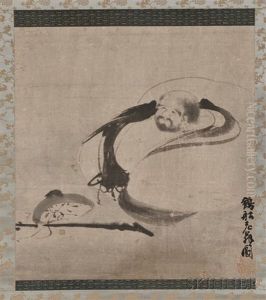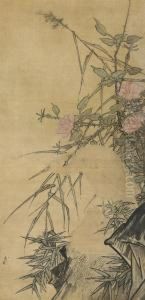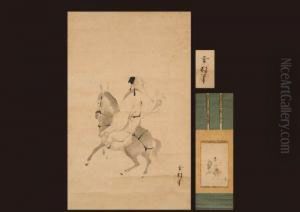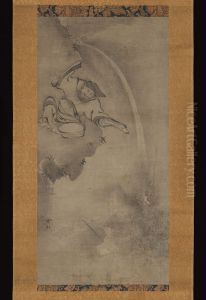Sesson Shukei Paintings
Sesson Shukei was a prominent Japanese painter and monk during the Muromachi period, known for his significant contributions to the development of ink painting in Japan. Born in Hitachi Province (present-day Ibaraki Prefecture) in 1504, Shukei became a Zen Buddhist monk at a young age, an experience that deeply influenced his artistic and philosophical outlook. Throughout his life, he traveled extensively across Japan, studying at various Zen temples and refining his artistic skills. This journey not only allowed him to absorb diverse artistic influences but also deeply enriched his spiritual and philosophical understanding, elements that he skillfully incorporated into his artwork.
Shukei is renowned for his landscape paintings, which are characterized by their dynamic brushwork and innovative compositions. His work often reflects the Zen concept of the unity of nature and spirit, showcasing landscapes that are at once deeply personal and universally resonant. Shukei's paintings are noted for their vigorous strokes and the masterful use of ink washes, which create depth and texture, imbuing his scenes with a sense of movement and vitality. His artistic style is sometimes compared to that of the earlier Chinese Song and Yuan dynasty masters, yet it is distinctively his own, marked by a unique fusion of Chinese techniques with Japanese sensibilities.
Despite the lack of extensive written records on his life, Sesson Shukei's legacy as an artist is well-documented through his surviving works and their influence on subsequent generations of Japanese painters. He is considered a master of suiboku-ga, the Japanese monochrome ink painting style, and his works have been highly valued for their aesthetic quality and philosophical depth. Shukei passed away in 1589, leaving behind a body of work that continues to be celebrated for its contribution to the development of Japanese art. His paintings are preserved in several important Japanese art collections and museums, serving as a testament to his enduring influence on the world of art.



![Egrets in Plum [right of the pair Egrets in Plum and Willow]](https://www.niceartgallery.com/imgs/4562529/s/sesson-shukei-egrets-in-plum-right-of-the-pair-egrets-in-plum-and-willow-53182457.jpg)
